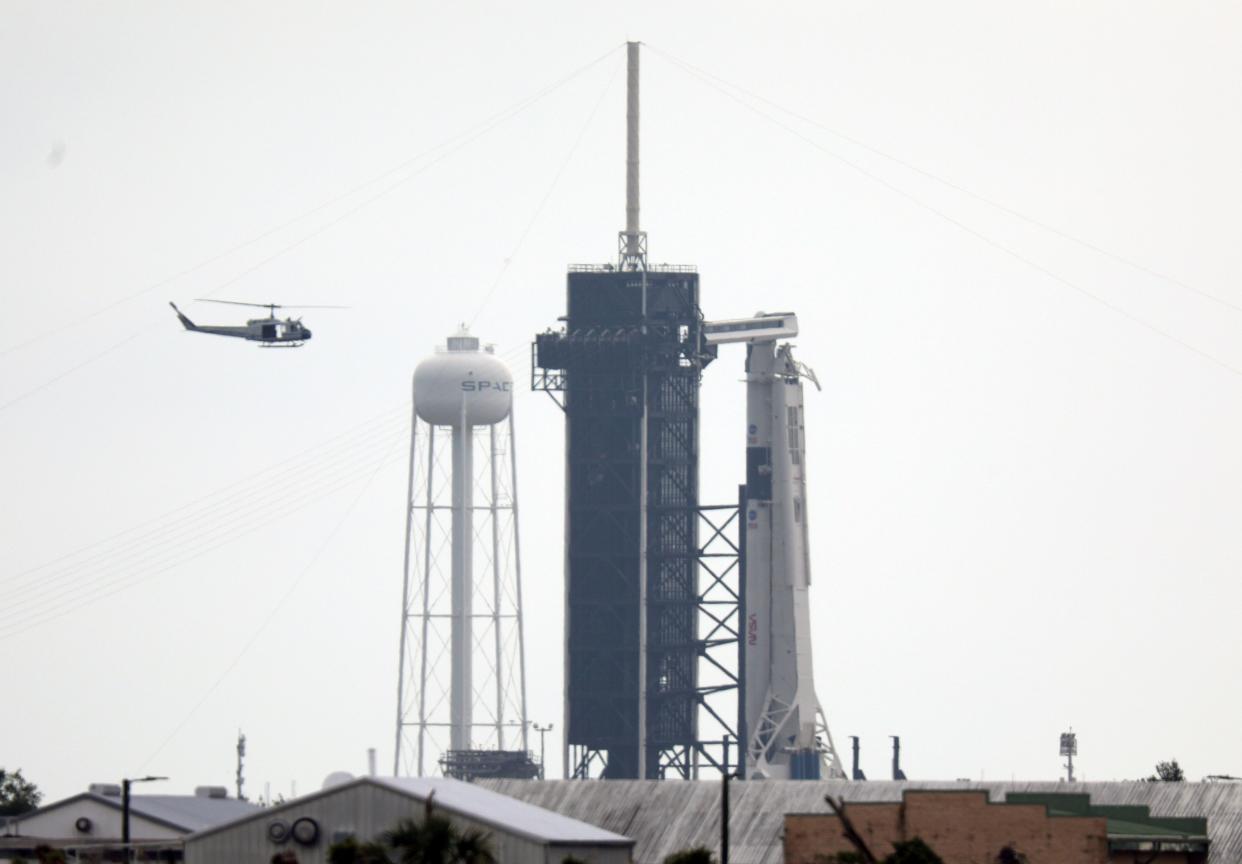SpaceX rocket will streak across Britain’s skies tonight on way to International Space Station

Sky watchers should look up at just before 10pm tonight to catch a historic rocket launch burning across British skies.
The Falcon 9 launch will be the first manned launch from America in nine years, and is historic for other reasons, says Adrian, known as ‘Virtual Astro’, a British astronomer and editor of Meteor Watch.
‘It’s the first-ever commercial crewed launch,’ he says. ‘We’ll see it fifteen minutes after it launches in America, around 9.51 and onwards, over Britain.’
Depending on weather conditions, it should be easy to catch over the UK, Adrian says.
Read more: Coronavirus: astronauts offer tips on how to survive isolation
‘Go outside at 9.50,’ he says, ‘Look south, and look half way up the horizon.
‘Once you see it, you should be able to track it across the sky, and it should be visible for about three minutes.’

‘As it flies over, you might see one or several objects, possibly bits of fairing from the rocket. It’ll be visible to the naked eye.’
The Met Office has forecast clear skies in many areas, and the craft will pass over the UK from a westerly direction at 9.50pm.
Instructions on when and how to watch tonight's launch and fly past of the UK by #CrewDragon can be found on https://t.co/V0mbfC66pw#LaunchAmerica #SpaceX
— VirtualAstro (@VirtualAstro) May 27, 2020
Virtual Astro says that interest in astronomy has shot up during lockdown, with families looking at the skies for the first time from their gardens.
The rocket is due to lift off from the Kennedy Space Center, launching astronauts Doug Hurley and Bob Behnken on a 19-hour ride aboard the company’s newly designed Crew Dragon capsule to the International Space Station.
The astronauts are scheduled to blast off from the same launch pad used in 2011 by NASA’s final space shuttle flight, piloted by Hurley.
Read more: There might once have been life on the moon
Prospects for an on-time liftoff hinged on the weather, with U.S. Air Force forecasters on Wednesday morning citing a 50% chance that thick clouds over eastern Florida could force a postponement.
If that happens, the next launch window would be on Saturday afternoon.
The last time NASA launched astronauts into space aboard a brand new vehicle was four decades ago at the start of the shuttle program.
Read more: Earth just had a near miss with a ‘city killer’ asteroid
Musk, the South African-born high-tech entrepreneur who made his fortune in Silicon Valley, is also CEO of electric carmaker and battery manufacturer Tesla Inc (TSLA.O).
Hurley, 53, and Behnken, 49, are NASA employees under contract to fly with SpaceX. They are expected to remain at the space station for several weeks, assisting a short-handed crew aboard the orbital laboratory.
Aerospace giant Boeing Co (BA.N), producing its own space launch vehicles in competition with SpaceX for NASA business, is expected to launch its CST-100 Starliner vehicle with astronauts aboard for the first time next year.

 Yahoo Movies
Yahoo Movies 

